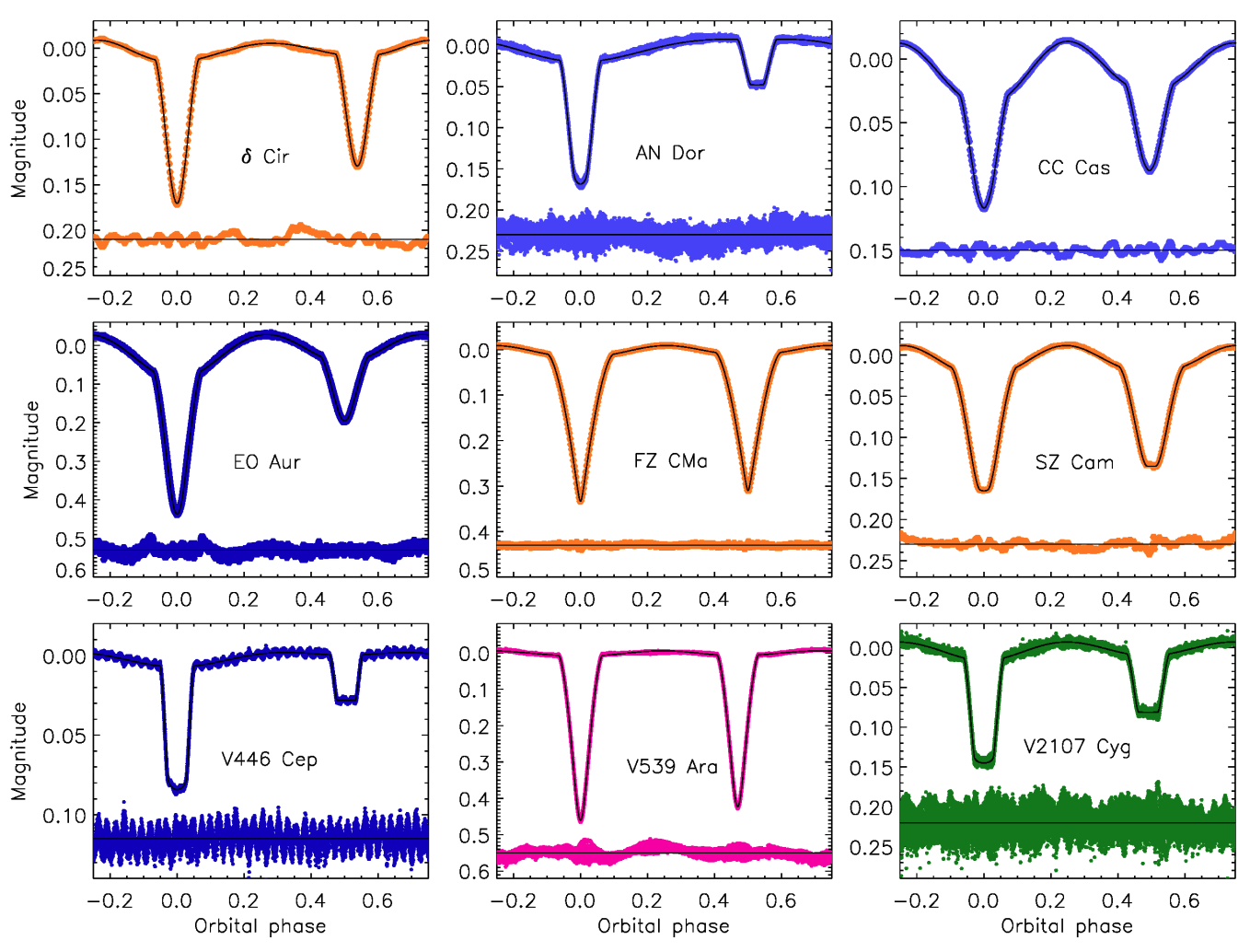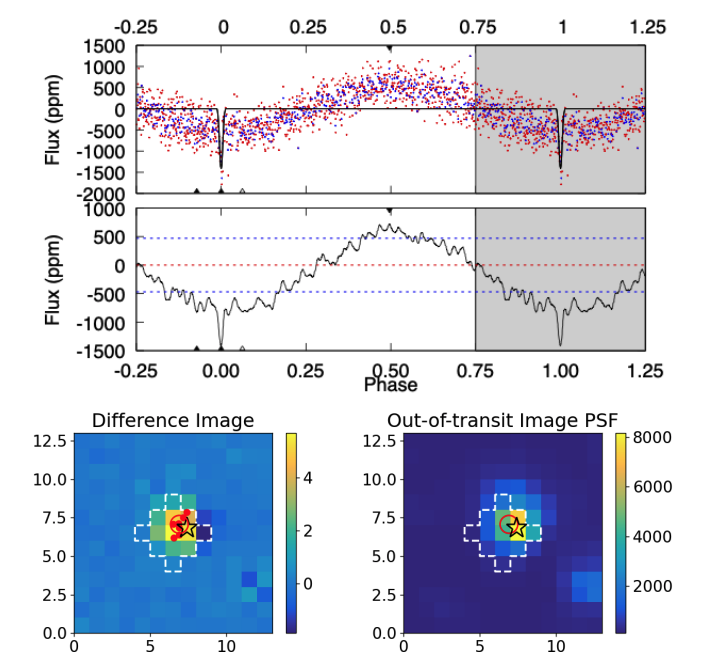Welcome TESS followers to our latest news bulletin. This week we have three papers from the archive for you, enjoy!
Photometric Investigation of Contact Binary DY Cet Based on TESS Data (Yildirim 2022) :
DY Cet is a 3.77 Gyr contact binary classified as a W UMa type system. In these systems both stars fill or even overfill their inner Roche lobe, with components surrounded by a common envelope and the system overall being far from sphericity.
In this paper the authors present the photometric analysis of TESS data for DY Cet which was observed in Sector 4 with a 120 second cadence.
Utilizing a combination of the TESS light curve and the published radial velocity data, the masses and radii of the system components were derived as:
- Star 1: M = 1.55 M⊙, R = 1.51 R⊙
- Star 2: M2= 0.55 M⊙, R = 0.95 R⊙
The degree of contact is 23% and the mass ratio 0.355. The orbital period derived from the data indicates a sinus-like change with decreasing parabola. A mass transfer between the two components is used to explain the orbital period change. This mass transfer is considered conservative at dM/dt = 1.1 x 10-7 M⊙ yr-1. The sinus-like change is thought to be caused by a third component with a mass of 0.13 M⊙. Please read the paper to find out more about this fascinating system.
High-mass pulsators in eclipsing binaries observed using TESS (Southworth and Bowman, 2022) :
The TESS mission has been very useful in the observation of massive stars, enabling study into pulsations and binarity. By studying pulsating massive stars in eclipsing binary systems, we may gain a better understanding of stellar structure and evolution history.
In this paper the authors have used TESS observations to study 18 high mass eclipsing binaries which show intrinsic variability. The authors modelled the TESS light curves, removing the effects of binarity to derive physical properties. Mass and radii measurements were obtained for δ Cir, CC Cas, SZ Cam V436 Per and V539 Ara.
Residual light curves were searched for pulsation signatures and of the 18, six displayed definite β Cephei pulsation, and eight possible. Additionally, seven showed stochastic low-frequency variability, and eight showed signs of possible pulsating B star pulsation.
The TESS Triple-9 Catalog: 999 uniformly vetted candidate exoplanets (Cacciapuoti et al., 2022) :
Since 2018 the TESS mission has detected 1000's of exoplanet candidates, of these only 205 (to date) have been confirmed, vetting of false positives is therefore critical. In this work the authors present the TESS Triple-9 (TT9) catalog, a uniformly vetted catalog containing the qualities of 999 exoplanet candidates listed on ExoFOP-TESS, known as TESS Objects of Interest (TOIs).
The catalog was produced using the Discovery And Vetting of Exoplanets pipeline (DAVE), and was part of the Citizen Science project Planet Patrol. Of the TOI's listed in the TT9 catalog 70% pass diagnostic tests and are therefore marked as true planetary candidates. There were 144 objects classified as false candidates, and an additional 146 as potential false positives.
The TT9 catalog contains ~20% of the entire ExoFOP-TESS TOIs list and it demonstrates the synergy between automated tools and citizen science projects.

Fig. 1: Taken from Yildirimet., (2022).: Comparison of TESS light curve of DY Cet system with light curve obtained from theoretical model.

Fig. 2: Taken from Southworth and Bowman, (2022).: Fit to the TESS data for nine of the short-period systems (labelled). In each case the data are shown after subtraction of the normalization polynomials. Those with lots of data were fitted using JKTEBOP and those with only 400 datapoints were fitted using WD2004. The best fits are shown with black lines. The residuals of the fits are shown at the base of each panel, multiplied by a factor of five to make the features easier to see. The data shown for AN Dor cover only one of the five TESS sectors, in order to decrease the size of the image file.

Fig. 3: Taken from Cacciapuoti et. al., (2022).: An example of potential false positive (pFP): TIC 97158538. The upper panel presents a portion of the Modelshift results. Here, one can see that the TOI presents light curve modulations coherent with eclipses. The lower panels displays the out-of-transit TESS image (lower right) and the difference image (lower left) between in- and out-of-transit frames. The colorbars show units of electrons per second (𝑒−/𝑠). Given the large scatter in the measured photocenters, likely caused by the light curve variability, we note a potential, sub-pixel centroids offset.